
views
- Make sure your ice maker is turned on and check for obstructions or malfunctions in the control arm and door switch.
- Make sure your freezer temperature is about 0 °F (−18 °C).
- Check for clogs of leaks in your fill tube, ice dispenser, water line, and water filter.
Make sure your ice maker is turned on.
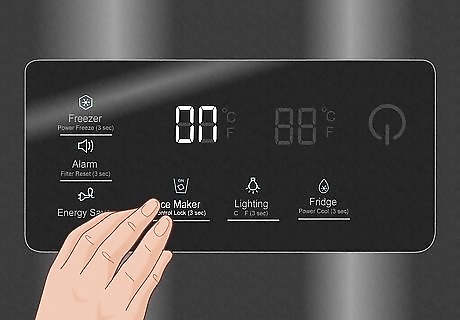
The location of the on/off switch may vary. Depending on the make and model of your freezer, it may be on the ice maker, inside the ice maker compartment, or on the control panel for your refrigerator. Check to make sure the ice maker is turned on. Consult your user manual if you can’t find the switch.
Make sure the control arm or infrared beam isn't obstructed.

Some ice makers have a control arm that raises when the ice tray gets full. It's a metal bar that spans the length of the ice tray. Others have an infrared beam that senses when the ice is full. Remove the ice tray and make sure there is no stray ice preventing the control arm from rotating or blocking the infrared beam. Some ice makers have a removable bucket that sits under the maker. Others have a tray that slides in and out of the ice maker compartment. If your refrigerator has an ice maker compartment in the upper-left corner, press the release button on the ice maker and pull the ice tray out.
Make sure the ice bucket or tray is inserted properly.

A poorly positioned tray can cause malfunctions. If your ice maker has an ice bucket or tray, make sure it is seated correctly in its proper location to prevent the ice maker from shutting off. Check to make sure there isn't any ice obstructing the ice tray. If you have an ice tray that slides into the ice compartment, make sure it slides all the way in and latches shut.
Make sure the dispenser, mold, or ejectors aren't frozen.
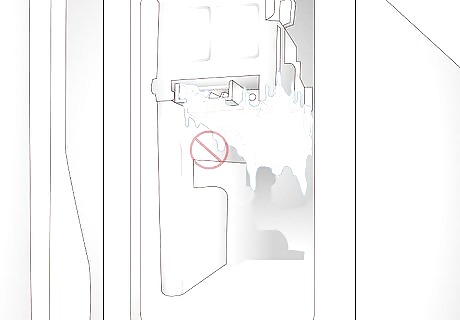
If there is no ice dropping, the dispenser could be clogged. Make sure there is no ice blockage in the chute or ice ejectors. Clear out any ice clogging the dispenser or ejectors with a plastic knife or allow your freezer to defrost. Check to make sure the chute that ice drops through is clear of any ice that may be obstructing it. Check that the ice mold isn't overflowing with ice above or below and that there isn't any ice blocking the ejector arms above the ice mold from ejecting ice. If you have an ice tray that has a metal augur on the inside, make sure there aren't any large ice clumps keeping the augur from moving. You can defrost ice using a hair dryer.
Make sure the temperature is set to 0 °F (−18 °C).

This is the ideal temperature for any freezer. If the temperature is too warm, the ice maker may shut off automatically. If it is too cold, water may freeze before it reaches the ice mold. Check the user's manual for your refrigerator model to learn how to set the temperature for the freezer or ice maker.
Make sure the fill tube isn't frozen.

If your freezer is too cold, the tube that fills the ice mold may freeze. This will prevent water from reaching the mold. If the fill tube is frozen, you can allow your freezer to thaw out, or defrost it with a hair dryer. The fill tube is usually located at the back of the ice maker or above the ice mold. You may need to remove the ice maker to access the fill tube.
Make sure the door is sealing properly.
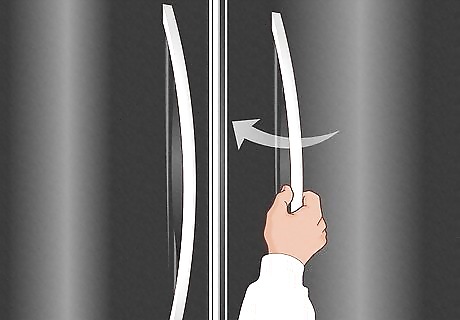
The door seal keeps cool air in and warm air out. If the door isn't sealing properly, the temperature inside your freezer may not be able to stay cool enough to make ice. Replace any defective door seals.
Make sure the door switch isn't malfunctioning.
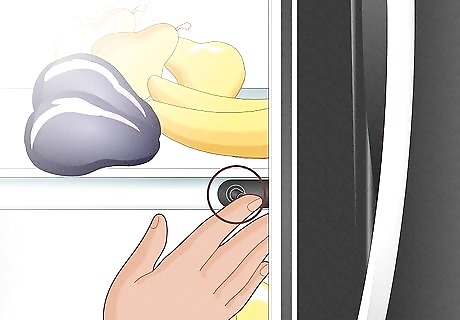
The ice maker may shut off if the switch isn’t working. Most refrigerators have a door switch that controls both the lights in the refrigerator and the ice maker. It's usually a button on the top or side of the door that depresses when the door is closed. Press this button and make sure the light in the refrigerator turns off. If it does not, the switch may need to be replaced.
Check the water line for damage or clogs.

The water line delivers the water the ice maker needs to function. If there is a problem with the water line, it will prevent your ice maker from receiving the water it needs. The water line is a small plastic or copper tube that connects the water faucet to the water valve on the back of the refrigerator. Check the line for leaks, kinks, or clogs. Water leaking inside the freezer could be a sign of a water line leak. Also check to make sure the faucet the water line is connected to is turned on and that there is no leak where the hose connects to the faucet.
Check the water valve for damage or leaks.

This valve connects the water line to the fridge. The valve is usually located on the back of the refrigerator where the water line connects. The water pressure from the valve needs to be at least 20 psi for it to function properly. If the valve is leaky, the ice mold may overfill. If it is damaged, it may not open to allow water to flow. Replace the water valve if need be. To replace the water valve: Turn off the water and disconnect the water line. Then remove the back panel from your refrigerator and remove the valve mounting bracket. Remove the wire harness and the valve assembly. Attach a new assembly to the wire harness and mount the new valve assembly. Reattach the back panel, along with the water line, and turn the water back on.
Check to see if the water filter needs to be replaced.
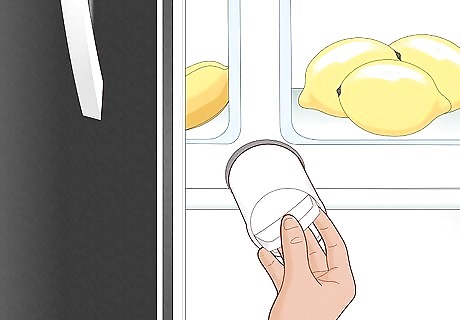
You should change your water filter every 6 months. If you do not, the water filter may become clogged with sediment which will restrict water flow to the ice maker. If the water pressure is low or your ice tastes funny, it might be time to change the water filter. Check the documentation that came with your refrigerator to learn where the water filter is located and how to change it. Some after-market filters may not work as well as the one that came with your refrigerator. Make sure you get a water filter that is right for your refrigerator model.
Reset your ice maker.

This may be enough to get it working again. On some refrigerator models, you can reset your ice maker by turning it off for a minute and then turning it back on. On some refrigerators, you may need to unplug the refrigerator for a minute and then plug it back in. Some ice makers require you to run a test cycle in order to reset the ice maker. Consult the user's manual to learn how to do this. There may be a test button on the control panel, or you may need to hold the ice size adjustment button for 10 seconds.
Call for a repair.

Ice makers have many components that can fail. If you can't figure out what is wrong with the ice maker, you may need to contact a repairman to fix your ice maker. Ice makers generally have a relatively short life span and may not be worth fixing. It might be less expensive to replace your ice maker. You can contact a local appliance repair shop or the point of sale where you purchased your refrigerator.


















Comments
0 comment